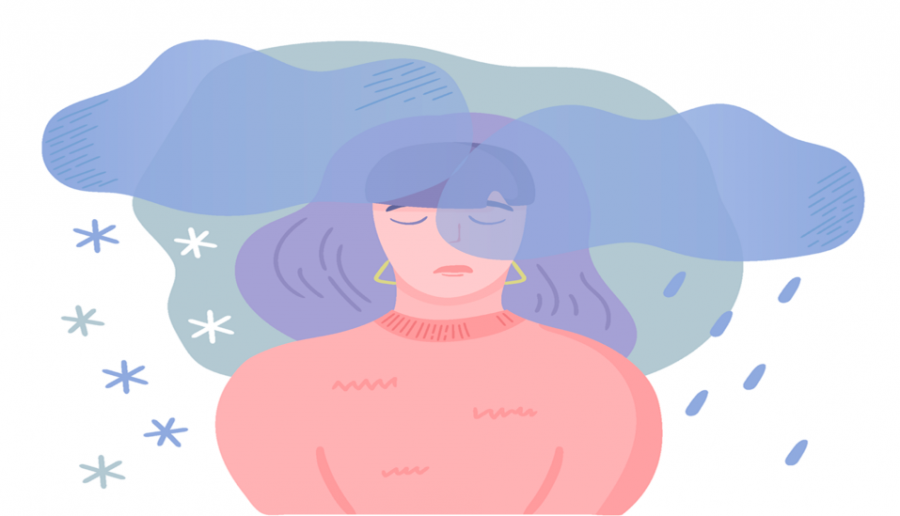Seasonal Affective Disorder: What You Need to Know
December 17, 2020
As the days get darker and begin to feel longer in Illinois, moods may shift and some may feel a bit more tired. As people begin to feel a shift in emotions, there begins the conversation of “seasonal depression.” In medical terms, it’s usually known as Seasonal Affective Disorder (SAD).
Not only can many experience this certain type of depression in the cold winter months, but some also experience it in the summer and see it diminish as it changes to fall. As a result of limited exposure to sunlight, this can change the chemicals that go on inside of our heads such as melatonin and serotonin, also known as the sleep and “happy” hormones. Being stuck indoors has been the norm for many since the pandemic resulted in lockdowns, and in turn, discussions revolving around SAD have become increasingly prevalent.
According to the National Institute of Mental Health, “SAD is not considered a separate disorder but a type of depression characterized by its recurrent seasonal pattern, with symptoms lasting about 4 to 5 months per year.” NIMH has said winter-pattern SAD symptoms include oversleeping (hypersomnia), overeating, particularly with a craving for carbohydrates, weight gain, as well as social withdrawal, or feeling like you’re “hibernating”. As for summer-pattern SAD, those symptoms may include trouble sleeping (insomnia), Poor appetite-leading to weight loss, restlessness, agitation, and anxiety episodes of violent behavior.
Seasonal Affective Disorder will not last forever, as it comes and goes during the change in seasons. In the meantime, there are tips and tricks you can employ in order to alleviate your SAD symptoms.
The holiday season is one of the most exciting times of the year, as the goal is to be jolly and cheerful for Santa’s nice list, so get cozy and try to involve yourself with family. Decorate your house both inside and out, and tinsel up your tree if you haven’t already. Seeing those colorful lights can make your at-home atmosphere so much brighter.
Wrapping and picking out presents for your friends and family also may provide a sense of accomplishment and joy, especially if you get to see their faces when they open them. You can even do things you used to do when you were younger, such as making gingerbread houses or rewatching old holiday movies.
Stepping away from the screen is essential for treating SAD. Our new normal nowadays is doing everything on Zoom, Google Meet, or on social media. The blue light screens emit also are shown to be damaging and impact the melatonin in your brain as well. Take a step back and try to come up with new projects or hobbies that distract you from your devices.
When it seems like nothing can pick you up from your slump, consider going on a walk or picking up a book. . Try to focus your attention on a new story that isn’t a show or movie; but, if you’re more of a writer than a reader, get creative and journal your daily thoughts or feelings. While these tasks may seem simple, sometimes all a person needs is a lighthearted, almost effortless distraction.
If you’re feeling increasingly isolated, be sure to use Zoom and other communication platforms to stay connected and seek out a support system. Take advantage of all the positives that come from this stressful time.
Some of these at-home remedies may not work for everyone, and that’s alright! There are plenty of other options available. Light therapy, also known as phototherapy, is an excellent tool that you can use. It’s simply just a special lightbox that you use for the first hour you’re awake to expose you to the bright therapy. It acts as outdoor lighting to your body, which has proven to improve certain brain chemicals.
If the winter season brings you severe symptoms, doctors are able to help by prescribing certain medications, normally antidepressants, which are able to aid you when you can’t improve your sunlight exposure. If medication is not the ideal option for you, there are several herbal remedies, supplements, and mind-body techniques that can also work to improve your moods.
These times are already stressful as it is, so don’t be shy or hesitant to find remedies if you experience SAD more this year. Taking care of yourself and your body should be your top priority year-round.







